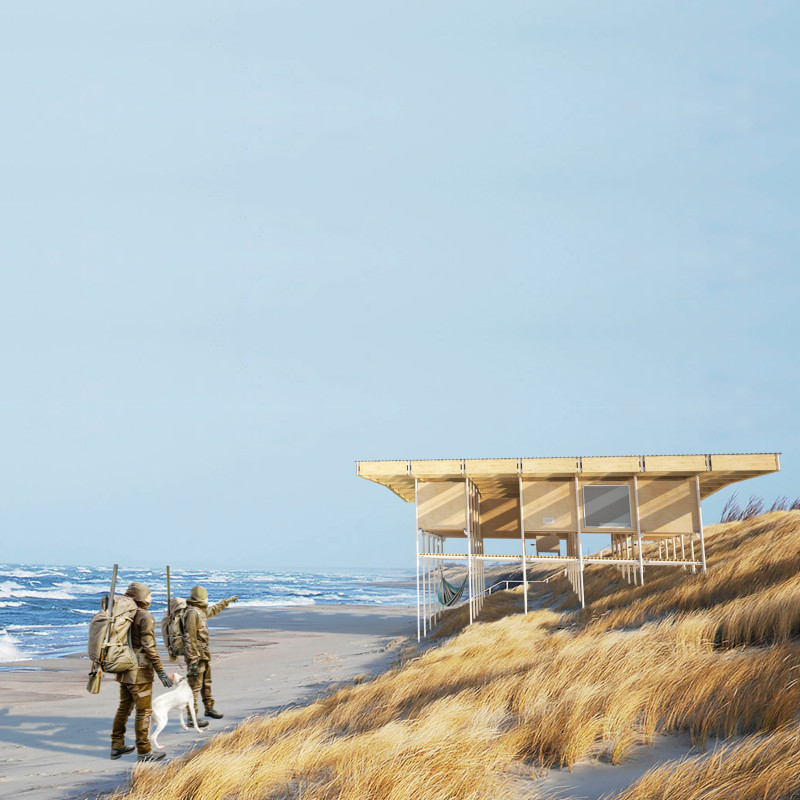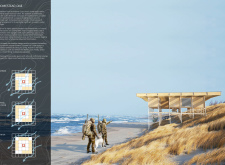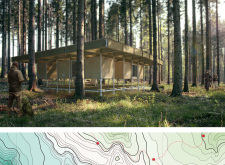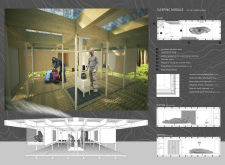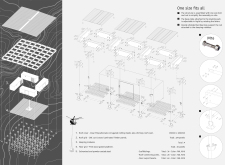5 key facts about this project
From a conceptual standpoint, the architecture emphasizes a harmonious relationship with nature while addressing practical needs. The design reflects a balanced approach that prioritizes environmental stewardship, utilizing passive design strategies that optimize energy efficiency. The project’s design narrative emphasizes the importance of light and ventilation, creating a series of interconnected spaces that flow seamlessly, enhancing the user experience.
Key elements of the project include the use of a diverse material palette, which reinforces its aesthetic coherence and functional integrity. The primary structure is constructed with concrete, known for its durability and flexibility in forming expansive yet intimate spaces. Glass plays a crucial role in the building’s façade, providing transparency that connects the interior with the exterior while allowing abundant natural light to penetrate deep within the structure. This visual connectivity not only enhances the living experience but also emphasizes the building's alignment with its surroundings.
Wood complements the concrete and glass, adding a sense of warmth and texture to the design. The choice of wood as an accent material supports the sustainability ethos, promoting renewable resources and contributing to the overall energy efficiency of the project. Steel is strategically employed within structural frameworks, ensuring stability and longevity, without detracting from the visual elegance of the design.
One of the unique approaches of this project is its incorporation of green spaces, both within and around the building. The architects have skillfully integrated landscape elements that contribute to the building’s ecological function while enhancing the quality of life for its users. Green roofs and living walls act not only as aesthetic features but also serve to improve air quality and biodiversity, creating inviting habitats for local flora and fauna. These biophilic elements encourage a connection to nature, which is increasingly recognized as essential to well-being in urban environments.
The thoughtful arrangement of public and private spaces further distinguishes this project. By providing communal areas such as gardens, lounges, and gathering spots, the design fosters interaction among residents and visitors, promoting a sense of community. The layout is intuitive, guiding users through the building and creating a sense of discovery as they engage with different spaces. This invitation to explore is complemented by careful consideration of circulation patterns, ensuring ease of movement throughout the site.
Attention to detail is evident in the architectural finishes as well. The selection of materials for the interior spaces echoes those used externally, creating a cohesive narrative throughout the building. This consistency not only reinforces the aesthetic vision but also ties together the concept of unity between nature and architecture. Elements such as custom cabinetry and artisanal fixtures showcase craftsmanship, lending a personal touch that elevates the experience within the space.
This architectural project is representative of a broader shift toward more sustainable and community-focused designs. It exemplifies how modern architecture can address social needs while respecting environmental imperatives. The careful balance between innovation and practicality is achieved through a meticulous process of design and material selection, resulting in a building that is both functional and visually appealing.
For readers interested in gaining deeper insights into this project, exploring architectural plans, architectural sections, and architectural designs will provide valuable details that enhance understanding of the design's intricacies and the thinking behind its development. This project stands as an example of how architecture can positively influence community dynamics while fostering a strong connection to the natural environment.


